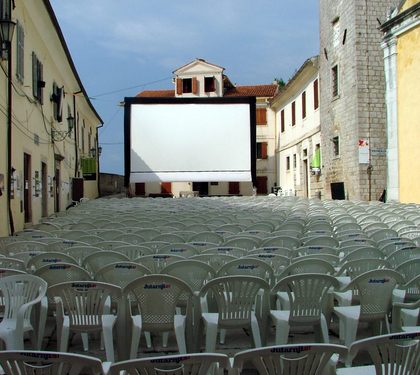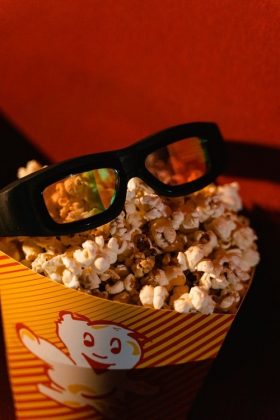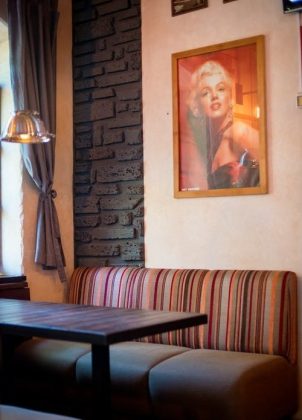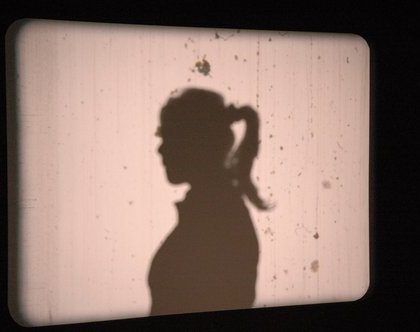Close your eyes during a film, and what do you hear? The power of a film soundtrack is undeniable, shaping our emotions, defining characters, and immersing us in worlds both real and imagined. But the soundscape of cinema hasn’t always been the rich tapestry of orchestral scores, curated pop hits, and intricate sound design we experience today. It’s been a fascinating journey, a remarkable evolution mirroring changes in technology, culture, and the very art of storytelling itself. Join me as we trace this evolution, from the live pianists of the silent era to the complex sonic architecture of modern movies.
The silent roar and the golden age symphony
It might seem counterintuitive, but the roots of the film soundtrack lie in silence. The ‘Silent Film Era’ (roughly 1890s-1920s) wasn’t truly silent; music was an absolute necessity. Imagine watching flickering images without any auditory cues – the experience would be hollow. Cinemas employed live musicians – pianists, organists, even small orchestras – to fill the void, providing not just background noise but crucial emotional context and narrative drive. These musicians often relied on ‘stock music’ or improvisation, becoming the real-time voice of the characters and the story. Pioneers like Joseph Carl Breil, who composed a dedicated score for the controversial but musically significant ‘The Birth of a Nation‘ (1915), began establishing the deliberate use of music to heighten cinematic impact.
With the arrival of ‘talkies’ in the late 1920s, sound became intrinsically linked to the film strip, ushering in Hollywood’s Golden Age (1930s-1950s). This era saw the orchestral score rise to prominence, becoming the undisputed king of film music. Major studios maintained full-time orchestras, crafting lush, symphonic masterpieces designed to manipulate audience emotions subliminally. Composers like Max Steiner (‘Gone with the Wind’), Erich Wolfgang Korngold (‘The Adventures of Robin Hood’), and Alfred Newman (the iconic 20th Century Fox fanfare) became legends, their scores weaving seamlessly into the fabric of the film. Their approach often mirrored the ‘invisible style’ of classic filmmaking, where the music, like the editing and camerawork, aimed to immerse the viewer without drawing attention to itself. Techniques honed during this period, such as dramatic ‘stingers’ and character-specific ‘leitmotifs’, became foundational elements of film scoring, adding layers of meaning and emotional resonance.
A changing tune: The rise of pop and new voices
By the late 1960s, the cultural landscape was shifting, and cinema sound began to change with it. The dominance of the purely orchestral score started to crack as a new generation of filmmakers, attuned to the burgeoning power of popular music, began experimenting. This wasn’t just about using different instruments; it was about capturing a different feeling, a raw authenticity that resonated with younger audiences. Films like Mike Nichols’ ‘The Graduate‘ (1967), with its iconic Simon and Garfunkel soundtrack, and ‘Midnight Cowboy’ (1969), featuring Harry Nilsson’s ‘Everybody’s Talkin”, were watershed moments. Crucially, many of these songs weren’t composed *for* the film; they were pre-existing pop hits, licensed to evoke a specific mood or comment on the narrative. This marked a significant departure from the Golden Age tradition of bespoke orchestral scores.
This integration of pop music wasn’t universally embraced initially. Arthur Penn’s ‘Bonnie and Clyde’ (1967) used upbeat banjo music during violent scenes, a choice that felt jarring and even subversive to contemporary critics, challenging the established norms of how music should function in relation to on-screen action. Yet, this reflected a broader cultural shift. Music was becoming a powerful identifier for the youth generation, who found more personal connection in the singer-songwriter movement (Bob Dylan, Joni Mitchell, The Beatles) than in the sweeping orchestrations of the previous era. Filmmakers tapped into this, using pop music not just for background atmosphere but as a vital tool for character development and thematic expression. Simultaneously, composers like Ennio Morricone were pushing boundaries from within, incorporating sound design elements and unconventional instrumentation into scores like ‘The Good, the Bad and the Ugly,’ blurring the lines between traditional scoring and a more experimental approach.
Expanding the sonic palette: Technology, genre, and the modern soundtrack
The period from the 1970s onwards saw an explosion in the diversity of film sound. Technological advancements played a huge role. The advent of multi-track recording, digital audio workstations (DAWs), and sophisticated surround sound systems gave composers and sound designers unprecedented control and creative freedom. This era saw the rise of composers like John Williams, who masterfully blended traditional orchestral grandeur with modern sensibilities in iconic scores for ‘Star Wars’ and ‘E.T.’, and the increasing prominence of electronic and hybrid scores. Hans Zimmer became a leading figure in this domain, crafting powerful soundscapes for films like ‘Inception’ and ‘The Dark Knight’ trilogy by fusing orchestral elements with cutting-edge electronic textures.
While pop music became more integrated across genres, the traditional orchestral score retained its power, particularly in certain domains. Think of the epic fantasy genre – could you imagine Middle-earth or Hogwarts without their sweeping, instantly recognizable orchestral themes? Composers like Howard Shore (‘The Lord of the Rings‘) and John Williams (‘Harry Potter’) created immersive ‘musical worlds’ where the score is fundamental to the world-building, defining locations and anchoring the audience emotionally. Alongside this, the role of accessible music libraries also evolved. What began as simple stock music for silent films transformed, especially with the digital revolution. Platforms offering customizable, high-quality library music, like Smartsound Cloud, provided filmmakers with flexible and cost-effective options, further diversifying the available sonic resources.
This expanding palette demanded a new kind of composer – not just a musician, but a storyteller deeply attuned to the visual narrative. As Adam Galloway notes, success in the modern industry often hinges on adaptability and the ability to serve the director’s vision. It’s about understanding *why* a piece of music works for a scene, not just *that* it sounds good. This requires a specific ‘film composer mindset‘, blending musical skill with cinematic literacy, practicing writing to picture, and being prepared to offer multiple creative solutions to best fit the story like a glove.
More than just music: The soundtrack as cultural touchstone
Today, a film’s soundtrack often transcends the movie itself. Soundtrack albums frequently become bestsellers, allowing us to carry a piece of the film’s emotional world with us. Think of the curated ‘mixtapes’ by directors like Quentin Tarantino or Wes Anderson – the specific pop songs they choose become inextricably linked to iconic scenes, defining the film’s cool factor and becoming cultural reference points. This phenomenon extends beyond albums; we see film music celebrated in dedicated orchestral concerts, adapted into video games, and forming the atmospheric backdrop in theme parks. The music takes on a life of its own, demonstrating its power to build worlds that resonate long after the credits roll.
Furthermore, the very definition of ‘soundtrack’ continues to broaden. While popular discussion and even awards often focus heavily on the musical score, there’s a growing recognition within the industry and academia of the importance of the *entire* sonic landscape. This includes dialogue, atmospheric sounds, sound effects, and the intricate work of sound design. Figures like Walter Murch and Randy Thom championed the artistic potential of sound design, and contemporary thought emphasizes the need for closer integration between composers and sound designers. The ideal, as explored in resources like Wiki.Audio, is a holistic approach where music and sound design work in concert from the earliest stages of production, creating a unified and powerful audiovisual experience rather than existing as separate entities.
The enduring power of the score: Where sound meets story today
The journey of the film soundtrack is a testament to cinema’s constant evolution. From the essential live accompaniments of the silent era, through the symphonic grandeur of Hollywood’s Golden Age, the pop-infused revolutions of the 60s and 70s, and into the diverse, technologically sophisticated soundscapes of today, music has remained a vital partner to the moving image. Whether it’s a soaring orchestral theme that makes our hearts swell, a perfectly placed pop song that captures a generation’s angst, or a subtle electronic pulse that builds unbearable tension, the goal remains the same: to serve the story, deepen our emotional connection, and transport us to another world. The modern soundtrack is a complex, collaborative art form, blending tradition and innovation, music and sound design, all in pursuit of that magical synergy that happens when sound and image perfectly align. And as technology and artistic visions continue to evolve, one thing is certain: the future of film sound promises even more exciting ways to hear the story unfold.






